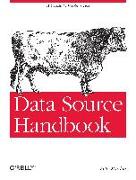The recognition of indigenous peoples¿ rights in the context of area protection and management in the Arctic
BücherAngebote / Angebote:
Master's Thesis from the year 2010 in the subject Law - Comparative Legal Systems, Comparative Law, grade: 9, 5 ETCS, , course: Master Programm "Polar Law", Recht der Polarregionen (Arktis und Antarktis), language: English, abstract: The issue of increased human activities in the context of area protection and
management is of very high relevance, specifically with respect to the Arctic. Due
to climate change, which continues to be widespread in the Arctic, and in some
cases, dramatic, new prospects for economic development arise. Reduced sea ice,
for example, is very likely to increase marine transport and access to resources.
At the same time, the region is faced with numerous environmental challenges
like those of projected shifting of vegetation zones and wide-ranging impacts on
animal species' diversity, ranges, and distribution. On the base of these
developments, it is very likely that interests of maximum resource extraction and
energy production conflict with those of keeping the environment pristine. In
consequence, "an extension of natural reserves/wilderness parks both on land and
at sea might need to be considered as the price for letting local populations and
incomers enjoy more unrestrained development in the remaining areas".
The Arctic is home to many indigenous peoples, including reindeer herders,
hunters, fishermen and nomads. They all share one common feature: their
dependency on a healthy environment to support their livelihoods and chosen
ways of life. They are the descendants of peoples who followed the retreating icecap in Europe, spread out over northern Siberia and the Russian Far East, and
crossed the Bering Strait some 4, 000 years ago or more. Indigenous peoples are
particularly impacted by climate change because of their cultural and physical
dependence on the environment, and their frequent lack of access to the resources
necessary to avoid the impacts of detrimental changes in
Folgt in ca. 10 Arbeitstagen




